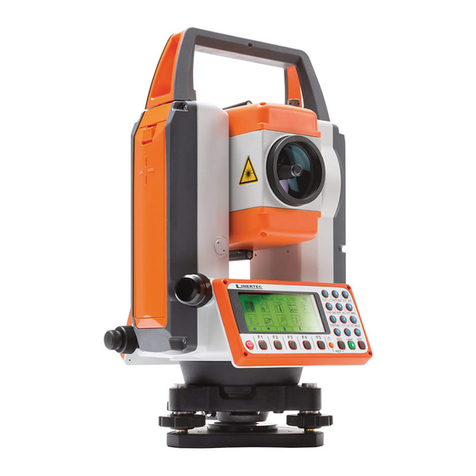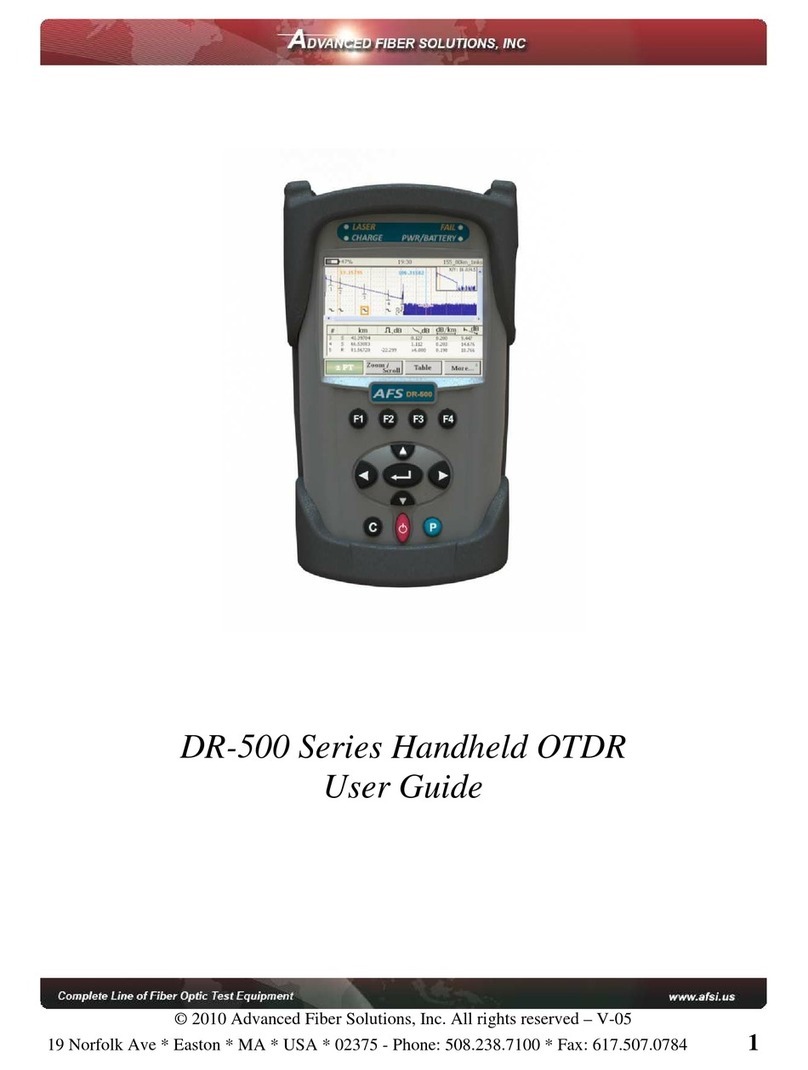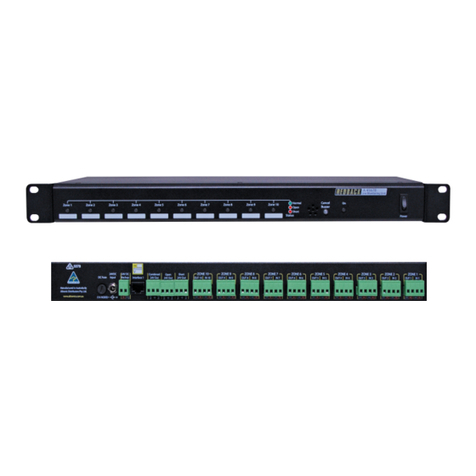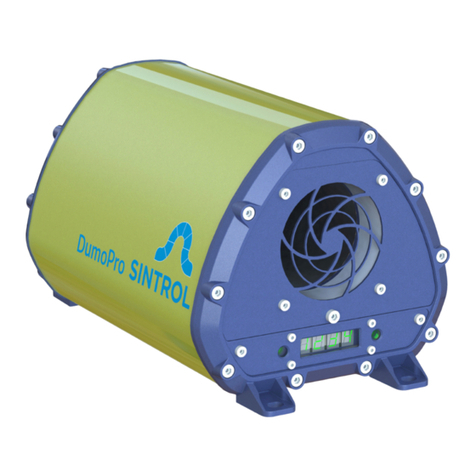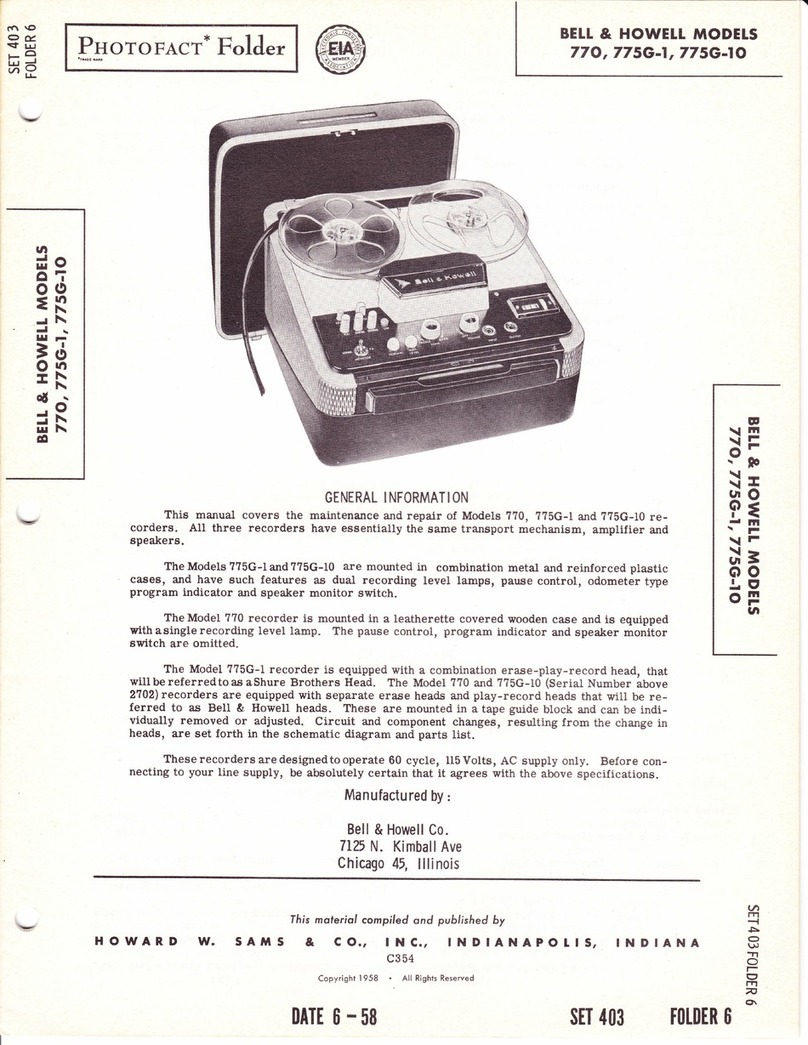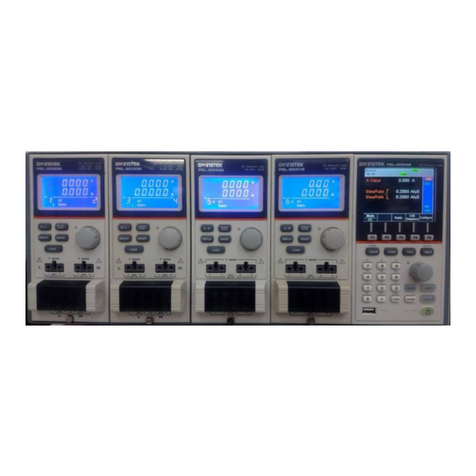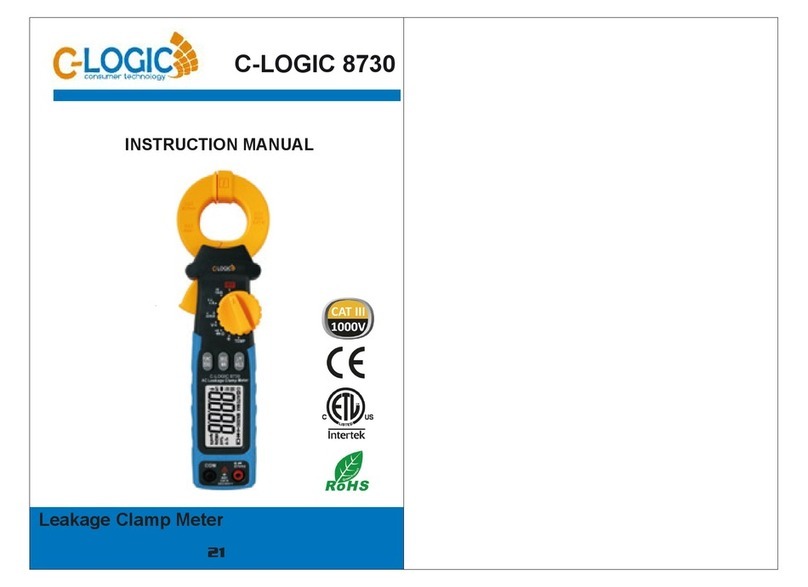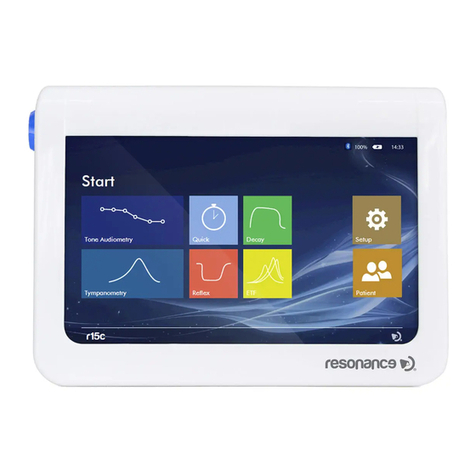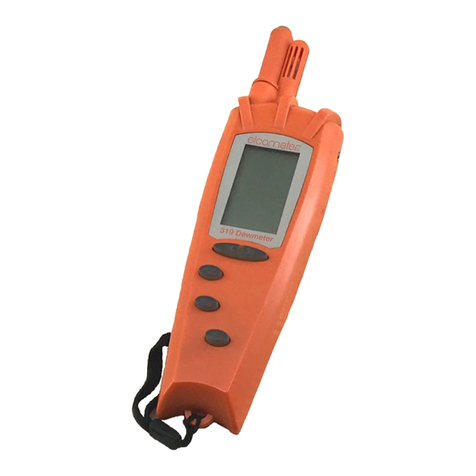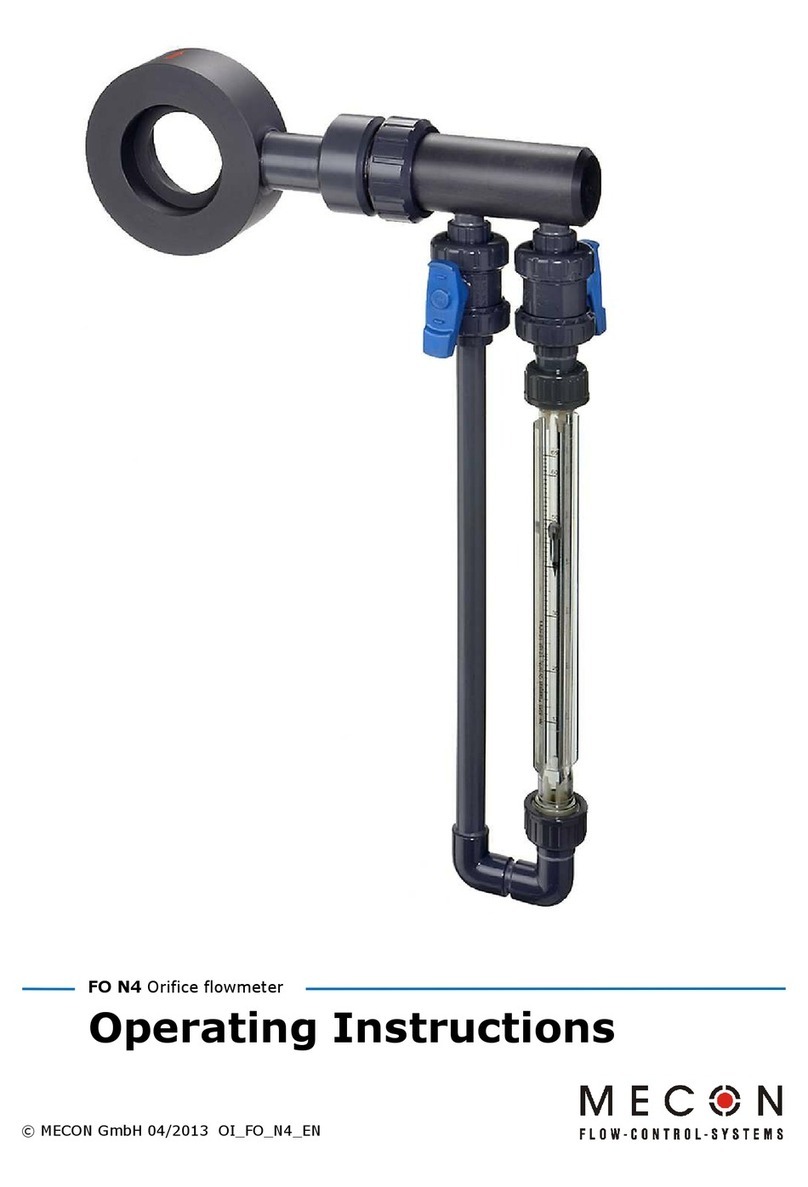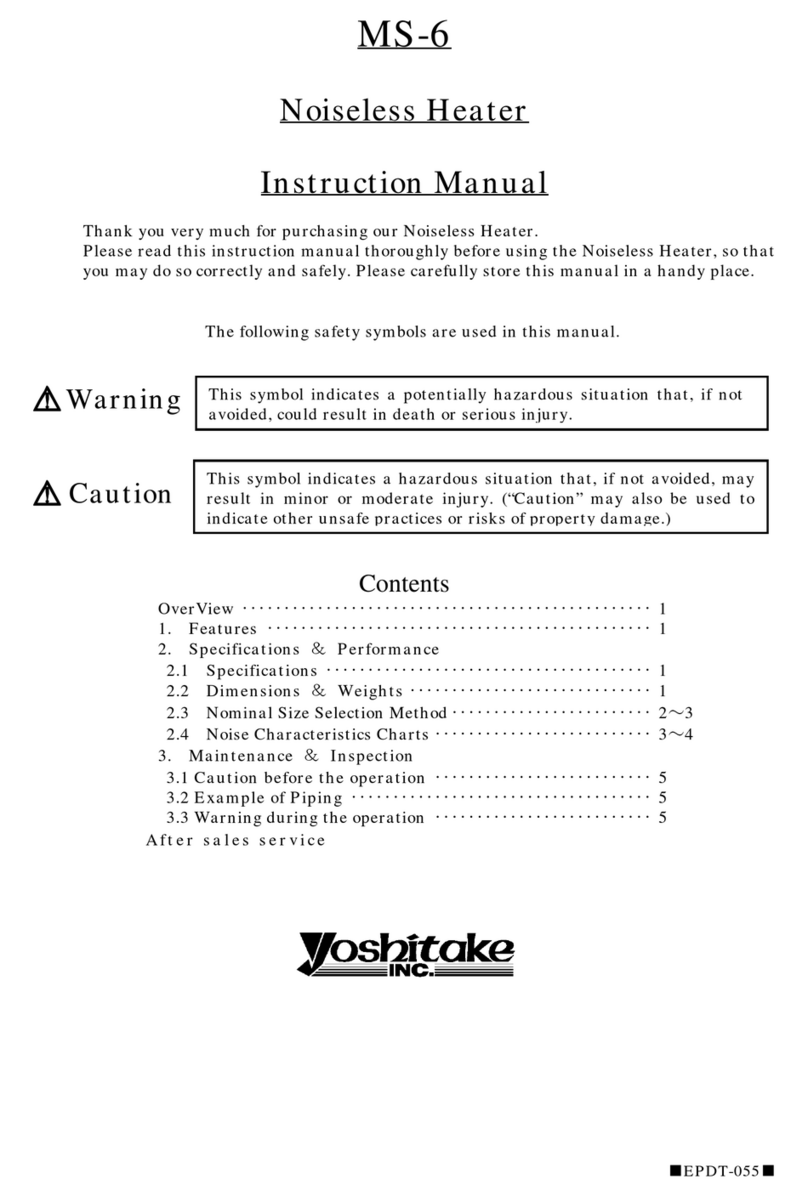Linertec LTS-202N User manual

TOTAL STATION
LTS-200SERIES
LTS-202N
LTS-205N
INSTRUCTION MANUAL
Basic Procedures



Content
Exemption clause .......................................................................................................................3
PRECAUTIONS REGARDING SAFETY................................................................................4
Usage precautions ......................................................................................................................7
1. BASIC OPERATION .........................................................................................................10
1.1 Names of parts...........................................................................................................10
1.2 Standard equipment....................................................................................................11
1.3 Unpacking and packing.............................................................................................12
1.4 Removing and attaching the Battery.........................................................................12
1.5 How to charge the Battery..........................................................................................13
1.6 External connections ..................................................................................................14
2. DISPLAY AND KEYBOARD...........................................................................................16
2.1 Display and keyboard.................................................................................................16
2.2 Operation keys............................................................................................................16
2.3 Function keys .............................................................................................................17
2.4 Alphanumeric input....................................................................................................19
2.5 LD POINT, Laser pointer...........................................................................................19
3. PREPARATION FOR SURVEYING .................................................................................20
3.1 Centring and Levelling of the Instrument..................................................................20
3.2 Laser plummet............................................................................................................20
3.3 Levelling with circular vial........................................................................................22
3.4 Levelling with the plate vial.......................................................................................22
3.5 Eyepiece adjustment...................................................................................................23
3.6 Target sighting............................................................................................................24
3.7 Attachment and detachment of tribrach.....................................................................25
4. TURNING THE POWER ON .............................................................................................26
4.1 Turning the power on and off.....................................................................................26
4.2 Adjusting LCD contrast .............................................................................................26
4.3 Adjusting illumination brightness..............................................................................27
4.4 Adjusting reticle illumination.....................................................................................27
5. ANGLE MEASUREMENT.................................................................................................28
5.1 Measuring an angle ....................................................................................................28
5.2 Resetting the horizontal angle to 0.............................................................................28
5.3 Holding the horizontal angle......................................................................................29
5.4 Inputting an arbitrary horizontal angle.......................................................................29
5.5 Displaying the slope % of the vertical angle..............................................................30
5.6 Changing the horizontal angle from clockwise to counter clockwise........................31
6. DISTANCE MEASUREMENT...........................................................................................32
6.1 Target setting..............................................................................................................32
6.2 Distance measurement................................................................................................33
7. CORRECTION MODE........................................................................................................35
7.1 Changing the target constant......................................................................................35
7.2 Changing the temperature .......................................................................................... 36
7.3 Changing the atmospheric pressure............................................................................37
7.4 Changing the ppm value.............................................................................................38
8. INITIAL SETTING..............................................................................................................40
8.1 Overview....................................................................................................................40
8.2 Entering the mode for initial setting 1........................................................................40

2
8.3 Entering the mode for initial setting 2........................................................................40
8.4 Entering the mode for initial setting 3........................................................................41
8.5 Entering the mode for initial setting 4........................................................................41
8.6 Entering the mode for initial setting 5........................................................................41
8.7 Example of changing an initial setting content..........................................................42
8.8 Initial setting 1............................................................................................................43
8.9 Initial setting 2............................................................................................................44
8.10 Initial setting 3..........................................................................................................46
8.11 Initial setting 4..........................................................................................................47
8.12 Initial setting 5..........................................................................................................47
9. ACCESSING THE FUNCTIONS .......................................................................................49
9.1 Accessing by help key................................................................................................49
9.2 Accessing by 007 .......................................................................................................49
10. DATA COLLECTOR ........................................................................................................51
11. CHECKS AND ADJUSTMENTS.....................................................................................51
11.1 Plate level.................................................................................................................51
11.2 Circular vial..............................................................................................................52
11.3 Vertical reticle..........................................................................................................53
11.4 Perpendicularity of line of sight to horizontal axis ..................................................54
11.5 Vertical 0 point error................................................................................................55
11.6 Laser plummet..........................................................................................................55
11.7 Offset constant..........................................................................................................56
11.8 Beam axis and line of sight......................................................................................57
11.9 The EDM beam axis.................................................................................................57
12. APPENDIX........................................................................................................................59
12.1 Warning and Error Messages...................................................................................59
12.2 Atmospheric correction............................................................................................60
12.3 hPa and mmHg conversion table..............................................................................61
12.4 Error when no atmospheric correction is made........................................................61
12.5 Atmospheric refraction and earth curvature correction............................................63
12.6 Distance range..........................................................................................................64
12.7 Specifications...........................................................................................................65
13. NOTICE TO THE USER OF THIS PRODUCT...............................................................67
13.1 Specifications of Laser Radiation ............................................................................67
13.2 The following labels are affixed to and must remain Attached to this laser product.
..........................................................................................................................................68
13.3 Caution to maintain the safety in compliance with the standard..............................68
13.4 Labelling...................................................................................................................70

3
Before using this product, be sure that you have thoroughly read and understood this
instruction manual to ensure proper operation. After reading this manual, be sure to keep in a
convenient place for easy reference.
Exemption clause
1) TI Asahi Co,. Ltd.(TIA) shall not be liable for damage caused by Acts of God, fire, alteration or
servicing by unauthorized parties, accident, negligence, misuse, abnormal operating conditions.
2) TIA shall not be liable for changes or disappearance of data, loss of company profit or
interruption of company operation incurred by the use of this product or malfunction of it.
3) TIA shall not be liable for damage caused by usage not explained in the instruction manual.
4) TIA shall not be liable for damage to this product caused by other equipment connected to this
product.
Copyright © 2014 TI Asahi Co,.Ltd
All Rights Reserved
TI Asahi Co., Ltd. is a sole proprietor of the LinertecExpress software.
The LinertecExpress software and publication or parts thereof, may not be reproduced in any
form, by any method, for any purpose.
TI Asahi Co,.Ltd. makes no warranty, expressed or implied, including but not limited to any
implied warranties or merchantability or fitness for a particular purpose, regarding these
materials and makes such materials available.

4
PRECAUTIONS REGARDING SAFETY_
Safety precautions (Must be followed)
The following items are intended to prevent possible injury to the user or other people and/or
damage to the instrument before it occurs. These safety precautions are important to the safe
operation of this product and should be observed at all times.
Distinctive displays
The following displays are used to distinguish precautions by the degree of injury or damage
that may result if the precaution is ignored.
WARNING
Items indicated by this sign are precautions which, if ignored, would result in serious injury.
CAUTION
Items indicated by this sign are precautions which if ignored may result in injury or material
damage.
•Here “injury” refers to injuries such as cuts, burns or electric shock, of which treatment
will not likely require hospitalization or long-term attention.
•“Material damage” refers to damage to facilities, buildings, acquired data, etc.
Before using this product, be sure that you have thoroughly read and understood this
instruction manual to ensure proper operation. After reading this manual, be sure to keep it in
a convenient place for easy reference.
This instrument complies with the protection requirement for residenTIAl and commercial
areas. If this instrument is used close to industrial areas or transmitters, the equipment can be
influenced by electromagnetic fields.
Quick Reference Guide provided in your carrying case contains the following items:
1. Basic Procedures
2. LinertecExpress Operating Procedures
WARNING
Do not stare into the laser beam directly as this may result in damage to your eyes.
LTS-200 is a Class IIIa (3R) Laser product. Do not look into the laser radiation aperture
directly as this may result in damage to your eyes.

5
Never use the telescope to view intense light such as direct sunlight or sunlight reflected
through a prism as this may result in loss of sight.
Do not disassemble, modify or repair this product as there is a risk of laser radiation.
Do not aim the laser beam at a person as it is harmful to the eyes and body. Receive the
examination treatment by the doctor when the eyesight or body trouble is doubted by any
chance.
•Electro-Magnetic Compatibility (EMC):
This instrument complies with the protection requirement for residential and commercial
areas. If this instrument is used close to industrial areas or transmitters, the equipment can
be influenced by electromagnetic fields.
•Do not use this product in a coal mine, in a location where there is coal dust, or near
flammable material as there is a risk of explosion.
•Do not disassemble, modify or repair this product as there is a risk of fire, electric shock
and burn injury. If you think the product requires repair, contact the retail outlet where you
purchased it or an authorized repair shop.
•Do not use a damaged electric cord plug or loose electric outlet when charging as there is a
risk of fire or electric shock.
•Do not charge the battery while covered by clothes or similar items as there is a risk of fire
if the clothes ignite.
•Do not use the battery or charger when wet as there is a risk of fire and burn injury due to
short-circuit.
•To prevent making short-circuit when removing the battery and charger from the case and
storing them, apply electrically resistant tape to the poles of the battery. Storing the battery
and charger as it is may result in fire or burn injury due to short-circuit.
•Do not throw the battery into fire or expose it to heat as there is a risk of injury if it
explodes.
CAUTION
For your safety, perform the inital and periodical inspection as well as when the
instrument is fixed and adjusted.
When the laser beam enters eyes, an unexpected accident might be caused by blink of eyes.
Do not place the laser product at a height where its laser beam may hit the eyes of car
drivers and pedestrians.
Do not place the laser product at a place where its laser beam may hit a reflecting object
such as a mirror or a glass window. The reflection beam of the laser is also harmful to the
human body.
When not performing measurement, cut off the power supply or shade the objective lens
with objective cap to prevent the instrument emitting the laser beam.
Keep the laser product in a place where persons, who do not have the product knowledge,
such as children, can not touch it by mistake.
•Before disposing of the instrument, destroy its power supply mechanism to prevent it from
emitting the laser beam.
•Do not remove the handgrip without good reason. If it does come off, be sure to attach it
securely to the instrument with screws. If it is not fastened securely, the instrument may
fall when you use the handgrip, leading to possible injury.
•Do not short the poles of the battery or charger as there is a risk of injury or fire.

6
•Do not touch any fluid which may leak from the battery as there is a risk of chemical burn
injury or reaction.
•Do not insert or remove the electric plug with wet hands as there is a risk of electric shock.
•Do not use the case to stand on as it is slippery and unstable and may cause you to fall,
resulting in possible injury.
•Make sure the tripod itself and the instrument on the tripod are both installed securely as
insecure installation may cause the tripod to fall over or the instrument to drop, resulting in
possible injury.
•Do not carry the tripod with the metal shoe pointing toward another person as it may injure
him/her.
•The instrument contains a rechargeable battery and a battery charger.
•It may be illegal to dispose the battery at the end of its useful life.
•Check with your local solid waste officials for details for recycling.

7
Usage precautions
Surveying instruments are high-precision instruments. In order to assure that the LTS-200
series total station which you have purchased will provide long-lasting maximum
performance, the precautions in this manual must be followed. Make sure to follow these
instructions and use this product properly at all times.
[Solar observation]
WARNING
Never view the sun directly using the telescope as this may result in loss of sight.
Never point the objective lens directly at the sun as this may damage internal components.
When using the instrument for solar observation, be sure to attach the specially designed solar
filter (MU64) to the objective lens.
[Laser beam]
Do not stare into the laser beam. LTS-200 is a Class IIIa (3R) Laser product.
[EDM axis]
The EDM of the LTS-200 series uses a red visible laser beam and its beam diameter is very
small. The beam is emitted from the objective centre. The EDM axis is designed to coincide
with the telescope sight axis (but both axes may deviate slightly because of intense
temperature changes and a long time lapse).
[Target constant]
Confirm the Target Constant of the instrument before measurement.
If a different constant is to be used, use the correct constant of the target. The constant is
stored in the instrument's memory when turned off.
[Reflectorless and reflector sheet]
•Reflectorless (Non-Prism)
The measurement range and accuracy of the Reflectorless mode are based on the condition
that laser beam is emitted perpendicular to the white side of a Kodak Gray Card.
The measurement range may be influenced by the shape of the target and its environment.
There is a possibility that the range may vary when the target does not satisfy the
conditions above at survey work.
•There is a possibility that correct distance measurement may not be performed by
dispersion or reduction of laser beam when the laser beam comes into the target from a
diagonal angle.
•There is a possibility that the instrument may not be able to correctly calculate out the
distance when receiving reflected laser beam from forth and back directions in case of
measuring the target on the road.

8
•There is a possibility that synthesized values are calculated and the distance may become
longer or shorter than the actual one when the operator measures the target of slope or
sphere or rugged shape.
•There is a possibility that the instrument may not be able to correctly calculate out the
distance by collecting the reflected laser beam from a man or a car that comes and goes in
front of the target.
•There is a possibility that the distance may not be correctly measured when measuring a
target in the direction where there is a reflecting object (mirror, stainless board, white wall,
etc.) or under too strong sunlight.
•In a situation where high accuracy may not be expected, perform the measurement by
Reflector sheet or Prism.
•When using reflector sheet, set the reflector sheet to have its surface to be approx. vertical
to the aiming line. If it is positioned not to be approx. right angle, there is a possibility that
correct distance measurements may be impossible by dispersion or reduction of laser beam.
In the following environments, the distance may not be possible to be measured; there is a
reflecting thing (mirror, stainless board, white wall, etc.) in the direction of the target, and
under too strong sunlight
[Battery & charger]
•Do not use any battery or battery charger that is not approved by LINERTEC as it entails a
risk of damaging the instrument.
•If water should happen to splash on the instrument or the battery, wipe it off immediately
and allow it to dry in a dry location. Do not put the instrument in the case until it is
completely dry as this may result in damage to the instrument.
•Turn off the power when removing the battery from the instrument as removing the battery
while the power is still on may result in damage to the instrument.
•The battery mark displayed on the instrument is only an estimation of remaining battery
power and is not completely accurate. Replace the battery quickly when it is about to run
out of power as the time a battery lasts on one full charge differs depending on conditions
of ambient temperature, and the measurement mode of the instrument.
•Confirm the battery level remaining before operating.
[About Clock Battery (lithium)]
•Clock battery is a backup battery used for calendar clock function.
•The battery can last about five years with regular use, but it is possible to be shorter
depending on usage.
•When the voltage of the clock battery is low or runs out, the date and time display
incorrectly and indication of "Clock-batt. voltage low" will appear.
•Please contact your the dealer which the purchased was mail for any exchange or return of
the clock battery.
[LD POINT, laser pointer]
When you make a correct direction using the “LD POINT”, aim the laser beam at the wall and
mark the centre and then confirm the discrepancy between the reticle centre and the marked
point beforehand.
[Storage and operating environment]

9
•To prevent making short-circuit when removing the battery and charger from the case and
storing them, apply electric resistant tape to the poles of the battery. Storing the battery and
charger as it may result in fire or burn injury due to short-circuit.
•Avoid storing the instrument in places subject to extreme high, low or radically fluctuating
temperature. (Ambient temperature range during use: –20° C to +50° C)
•Distance measurements may take longer when atmospheric conditions are poor such as
when heat shimmer occurs. When storing the instrument, always put it in its case and avoid
storage in dusty location or location subject to vibration or extreme heat or humidity.
•Whenever there is a sharp temperature difference between the instrument’s storage and
usage environment, allow the instrument to adjust to the environment for an hour or more
before using it. Make sure to protect the instrument from the sun if the location is subject to
intense direct sunlight.
•The battery should be charged approximately once per month if the instrument is to be
stored for an extended period of time. The instrument should also be removed from its case
occasionally and aired out.
•In addition to these precautions, be sure to handle the instrument properly at all times
following the descriptions given in the various sections of this manual to assure safe and
proper measurements.
[Transporting and carrying the instrument]
•Be careful to protect this instrument from shock of impact and excessive vibration which
may result in damage during transportation and shipment.
•When transporting the instrument, always put it in the case and wrap shock absorbing
material around it and be sure it is handled as “FRAGILE”.
[Checks and repairs]
•Always check the instrument before beginning work and check that the instrument is
maintaining the proper level of precision. LINERTEC bears absolutely no responsibility
for damages due to survey results obtained from surveys conducted without an initial
instrument check.
•Never disassemble the instrument, battery or charger, even if you do detect an abnormality,
as there is a risk of fire or electric shock due to short-circuit. If you think the product
requires repair, contact the retail outlet where you purchased it or an authorized repair site.

10
1. BASIC OPERATION
1.1 Names of parts
Focus ring
Instrument height mark
Battery latch
Battery pack
Telescope tangent screw
Telescope clamp screw
Clamp screw
Tangent screw
Base plate
Top handle
Collimator
Eyepiece ring
Eyepiece
Laser indicator
Plate vial
SD & USB cover
Display panel
Key board
Detaching knob
Leveling screw
Detachable type

11
1.2 Standard equipment
•Instrument
•Carrying case
• BP04 Battery (2 pcs.)
• BC04 Charger
• AC Adapter
•Power supply cord
•Plumb bob
•Plummet hook
•Hexagonal wrench
•Adjusting pin
•Screwdriver
•Rain cover
•CD-ROM (Basic operation & Special Functions manual)
•USB cable
•RS232 cable
•SD card(2GB)
Centering knob
Objective lens
Laser plummet

12
1.3 Unpacking and packing
[Unpacking the Instrument from the case]
①Set the case down gently with the lid facing upwards.
②Open the latches while pressing down on the lock (safety mechanism)
and open the lid of the case.
③Remove the instrument from the case.
[Packing the instrument in the case]
①Make sure the telescope is fairly levelled and lightly tighten the telescope clamp screw.
②Line up the housing marks (round yellow marks on the instrument) and tighten the upper
and lower clamp screws.
③With the housing marks are facing upwards, set the instrument gently in the case without
forcing it. Close the lid to the case and secure the latches.
1.4Removing and attaching the Battery
[Removing the Battery]

13
①The upper part of the battery is pushed.
②Lift up the battery pack and remove it from the instrument.
[Attaching the Battery]
①Place the electric contact on the bottom of the battery pack onto
the protrusion of the instrument and push the battery pack down into place.
1.5 How to charge the Battery
The LTS-200 comes with two lithium-ion rechargeable batteries with a typical operating time
between 8(EDM+ETH) to 22hours(ETH only).
Specifications
Battery Type: Li-ion
Voltage: 7.4VDC
Capacity: 4400mAh
[Battery Charger]
AC Adapter
Input: 100-240VAC ~50/60Hz 0.58A
Output: 12.0VDC 2.0A
[Charging the battery]
Battery Charging Description BP04 Battery
Battery Bay
LED Status Indicator
Plug the AC cord to AC Adapter
Plug in AC Adapter to Battery Charger
Plug the AC wall battery charger into the wall socket and LED turns grenn
Place your battery in charger bay correctly and make sure LED turns red
Wait until battery LED indicator turns GREEN for a full charge.

14
LED
Description
NONE
AC cord or AC adapter is not correctly connected
RED
Battery is being re-charged
GREEN
Battery charge is finished.
A fully discharged battery will take approximately 2.5 hours to fully charge.
Contact a Recycling Center to ensure proper disposal of lithium-ion
Batteries.
1.6 External connections
[Inserting SD card]
①Open the SD & USB cover.
②Insert the SD card(The side with terminal should face the instrument and the cut-off
corner should be up.)
③Insert the SD card to the end. Be sure not to press the card too hard.
④After the SD card is inserted, close the SD & USB cover completely.
Removing SD card]
①Open the SD & USB cover.
②Lightly press the SD card slot then release yourself from there.
③The SD card pops up.
④After the SD card is removed, close the SD & USB cover completely.
SD&USB Cover
Direction to insert the
SD card
SD Card
Cut-off corner
Slide the SD & USB cover to
left to open the cover.

15
CAUTION
• Be sure to turn the power off before inserting and removing the SD card.
•Be sure to close/open the SD & USB cover and insert/remove the SD card indoors.
[Suitability of SD card]
•The SD card that can be used with the instrument is 8GB or less.
•SD card and SD logo is registered trademark.
•The SD cards listed in the following table have been tested by us and
it has been confirmed that the SD cards can be used with the LTS-200 series.
This test has been done with only the LINERTEC LTS-200 series Total Station, but no other
LINERTEC Total Stations. When using with other LINERTEC Total Stations, please
contact us to confirm
if it works properly.
Also it has been confirmed that the models mentioned in the following table can be used with
the LTS-200 series Total Station, but it has not been confirmed whether other brand SD cards,
not mentioned here, can be used with the LTS-200 series Total Station.
Please note that the test has been done by us and it is not meant that each SD card
manufacturer guarantees that the SD cards can be used with the LINERTEC LTS-200 series.
• Regardless of the information here, be aware that all the SDHC cards can’t be used with
the LTS-200 Total Stations.
• Test item:The following has been done according to our test standard.
①When data is being sent (with connecting USB), it is necessary to be able to refer to
information in the SD card from PC and to operate the file.
②When writing / reading text, it is necessary to be able to read/write text file.
[Connecting USB cable]
①Open the SD & USB cover.
②Insert the USB connector into the USB port in the right direction.
③After the USB cable is removed, close the SD & USB cover
completely.
CAUTION
•Be sure to turn the power off before inserting/removing the USB
cable.
•Be sure to open/close the SD & USB cover and insert/remove the
USB cable indoors.

16
2. DISPLAY AND KEYBOARD
2.1 Display and keyboard
2.2 Operation keys
Key
Description
[POWER]
ON/OFF of power supply.
[ESC]
Returns to previous screen or cancels an operation.
[ILLU]
Turns the illumination of the LCD display and telescope reticle on
and off.
[ENT]
Accepts the selected (highlighted) choice or the displayed screen
value.
[LASER]
Displays the laser plummet and the LD point screen when you push
the Laser key.
(Refer to “2.5 LD POINT, Laser pointer”, “3.2 Laser plummet”).
[Alphanumeric]
At the numerical value screen, the numerical value and the sign “.”
displayed are input. The English characters printed right under
numeric of each key are input.
[HELP]
Pressing [ILLU]+[ESC] key causes a help menu to appear in
MODE A or MODE B or causes a help message to appear.
Power supply key
Function key
Illumination key
ESC key
Laser key
Enter key
Alphanumeric
and +/- key

17
2.3 Function keys
Display
MODE A
F. Key
Description
[MEAS]
F1
Pressing this key one time measures the distance in normal
mode. Another measurement type can be selected by
InitialSetting 2.
Pressing this key twice measures the distance in coarse mode.
Another measurement type can be selected by initial setting 2.
[TARGET]
F2
Switches the target.
REFLECTORLESS / SHEET / PRISM
[0 SET]
F3
Resets the horizontal angle to 0° 0’ 0” by pressing twice.
[S.FUNC]
F4
LinertecExpress Special Functions.
[MODE]
F5
Switches the screen between MODE A and MODE B.
MODE B
[DISP]
F1
Switches the display composition in the order
“H.angle/H.dst./V.dst.”, “H.angle/V.angle/S.dst.” and
“H.angle/V.angle/H.dst./S.dst./V.dst.”
[ANG SET]
F2
Brings up the angle setting screen for setting angle-related
parameters.
(H.ANGLE /%GRADE, H.ANGLE INPUT and L/R
REVERSE)
[HOLD]
F3
Pressing this key twice retains (holds) the horizontal angle
shown on the display.
[CORR]
F4
Brings up the screen for changing the target constant,
temperature, pressure setting.
[MODE]
F5
Switches the screen between MODE A and MODE B.
This manual suits for next models
2
Table of contents
Other Linertec Measuring Instrument manuals

